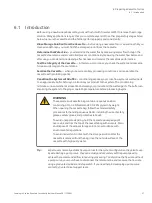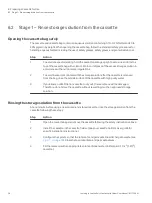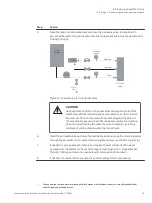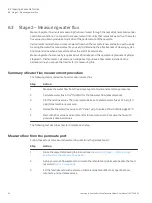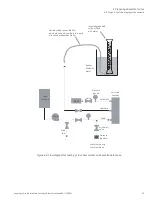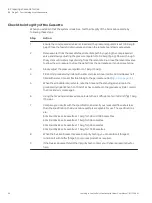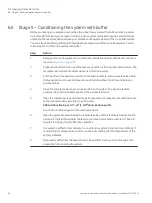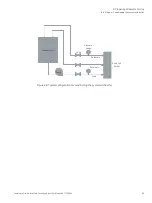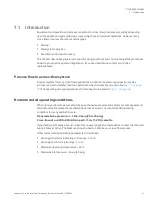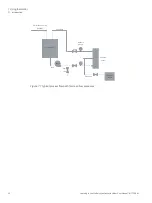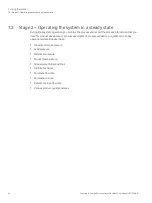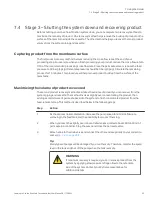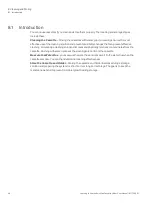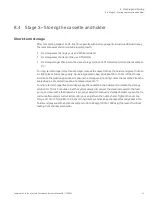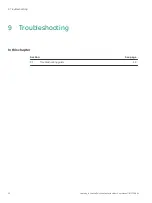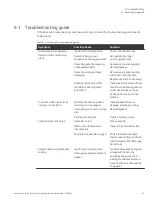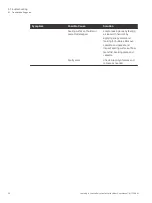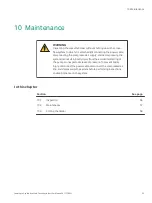
7.1 Introduction
Equipment configuration and process conditions for cross-flow processes vary widely depending
upon the application, system design, process objectives, and product objectives. However, many
cross-flow processes share three main stages:
•
Startup
•
Steady state operation
•
Shutdown and product recovery
This chapter describes a general procedure for using your Kvick Lab. You must adjust the procedures
based on your specific goals and application. If you need assistance, contact your Cytiva
representative.
Process flow in a cross-flow system
A typical system for many cross-flow applications includes three pressure gauges (for precise
process control and safety), feed tank, permeate collection vessel, and a drain line (
). The operating procedures described in this chapter are based on
Recommended operating conditions
When using your Kvick Lab cassette, fully open the permeate valve and adjust your pump speed and
retentate valve to achieve the recommended cross-flow rate. The recommended operating
conditions for many applications are:
Transmembrane pressure—1.7 to 2.4 barg (25 to 35 psig)
Cross-flow rate—600 to 800 ml/min per 0.11 m
2
(1.2 ft
2
) cassette
If your feed is particularly viscous or has other unusual physical characteristics, contact the technical
support team at Cytiva. The team can show you how to optimize your cross-flow process.
Other recommended operating parameters include these:
•
pH range, long-term (operating or storage) – 2 to 13
•
pH range, short-term (cleaning) – 1 to 14
•
Maximum operating temperature – 50 °C
•
Maximum inlet pressure – 4 barg (60 psig)
7 Using the Holder
7.1 Introduction
Learning to Use the Kvick Lab Cassette Holder User Manual 18117269 AI
41

